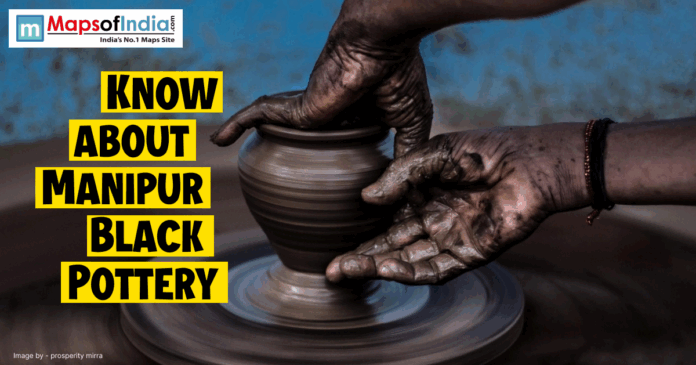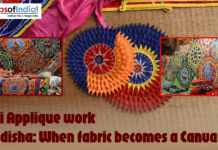Manipur Black Pottery is a timeless craft that has cultural significance. This art form is known as Longpi Ham, which started from Manipur’s Ukhrul district. This art is mainly practised by the Tangkhul Naga tribe, and it’s steeped in tradition. This art form has a distinct black sheen that captivates art lovers. In recent years, this has gained global fame for eco-friendly elegance. The black pottery is rooted in ancient techniques, and it blends utility and beauty. From cooking pots to decorative vases, the structures that are created are versatile.
Origins and Cultural Roots
The art of black pottery in Manipur began centuries ago. The known origin of this is Longpi village in Ukhrul. The Tangkhul Naga tribe mainly practises it. A recent Hindustan Times report traces it to the Neolithic period. According to folklore, the Goddess Panthoibi is believed to inspire this. She symbolises artefact creation in the tribe. From ancient times, this was called Loree Hamlei or royal pottery. Only elites could afford it. It was being used in a ritual. Pots adorned weddings and childbirth ceremonies. The craft reflects Tangkhul heritage. It’s a symbol of Manipur’s cultural pride.
Unique Materials and Composition
The pottery uses special ingredients to create the art. Ground black serpentinite stone is the key ingredient. You need to mix brown clay, and from that, you will get Longpi. The clay is found exclusively in this region. The ratio of this mixture is 3:1. Serpentinite adds strength to it. Weathered rock acts as a binder. No chemicals or paints are used to create this pottery. The mix creates a durable paste that lasts long. A zishta article praises its natural makeup. The black colour comes from burning the pottery. Local leaves polish the finish. This eco-friendly blend ensures sustainability. It’s a hallmark of the craft.
Handcrafted Without a Potter’s Wheel
Longpi pottery does not use modern pottery-making tools. No potter’s wheel is used to create this art. Artisans give the shape to pots by hand. This is a detailed process. Clay is kneaded all day. The clay is flattened on wooden boards. Moulds and hand tools are used to give the desired shape to clay. Potters move around the clay. A rounded stone is supported from the inside. External patting creates perfect forms, which is what you want. To create this art skill is required. This labour-intensive method is unique. It demands precision and patience. The result is authentic craftsmanship.
Firing and Finishing Techniques
The firing process is the most important process in pottery. Pots are dried in the sun after being given their desired shape. They’re fired in open bonfires. Temperatures for this fire need to reach 900 to 1200°C. This Firing process needs to last for five to nine hours. A recent report explains the reduction in firing. The result of this firing process gives a black colour to the pot. After firing this pot for the desired time, Hot pots are polished with Mache leaves. This polishing process adds a glossy shine to the pottery. Some use beeswax to get lustre. An article notes cane accents on handles. The finish mimics metal. Each piece is both rustic and elegant. This technique ensures durability.
Utility and Health Benefits
Longpi pottery is highly functional and health-beneficial. The work created by this is used for cooking and storage. These pots work properly on gas stoves and open fires. This pot can guarantee more food security. The clay’s iron content enriches food. It may kill germs during cooking. The pot created in this has a non-stick nature. Slow cooking enhances the flavours of the dishes. Pots help with morning sickness. They’re also eco-friendly and biodegradable. According to the recent UKHRUL report, it has been noted that food tastes better in Longpi pots. From biryani to tea, it’s versatile. Health and utility make it special.
Economic and Social Impact
The craft helps to empower local artisans. Practising black pottery is a key source of income in Longpi. According to the Hindustan Times article, youth are showing interest in learning this traditional art form. Mathew Sasa’s craft outlet in Delhi boosted its reach. Women like Presley Ngasainao are famous artisans who practise this art and show collectives. Her work has been praised on a global level. The craft creates jobs for dropouts. The pottery created here is being exported all around the world, like Australia and Germany. It has a big global appeal. Rural economies are benefiting from this. The craft preserves Tangkhul identity. It fosters community pride and sustainability.
Challenges and Modern Revival
The craft faced many challenges over the years. The surge of aluminium pots once threatened its survival. This shift was about to change the fate of this art form. Younger generations were losing interest in it. Raw materials are scarce outside Longpi. High labour makes producing this art costly. The pottery produced here is at a high price. Yet revival efforts are being made by local communities as well as the government. Artisans like K Timothy won state awards. Sasa Hampai’s centre is being established to train youth. A Hindustan Times report mentions international trade fairs. Online e-commerce platforms like Amazon are helping to boost sales. The craft’s heritage drives its comeback. Modern demand ensures its future.
Why Manipur Black Pottery Stands Out
Longpi pottery is a unique kind of pottery. The pottery was created in wheel-free crafting, which is rare. The black sheen mimics metal. It is a cultural gem. This is also eco-friendly and chemical-free. The Tangkhul tribe’s centuries-old legacy adds depth to this. Pots are both decorative and practical. This pottery has always been praised for its versatility. It suits modern and traditional homes. Health benefits like iron enrichment shine. Global markets embrace it. From Manipur’s hills to urban kitchens, it captivates. This craft blends art, function, and heritage.
Conclusion
Manipur Black Pottery is a cultural treasure. Its roots trace to Longpi’s Tangkhul tribe. Handcrafted with serpentinite and clay, it’s eco-friendly. The wheel-free process demands skill. Firing and leaf polishing create its iconic look. Pots enhance flavours and health. They empower artisans and rural economies. Despite challenges, revival efforts succeed. In recent years, it has become a global favourite. From cooking to decor, it’s versatile. This pottery tells Manipur’s story. Its elegance and utility inspire. Explore Longpi Ham to connect with tradition.





